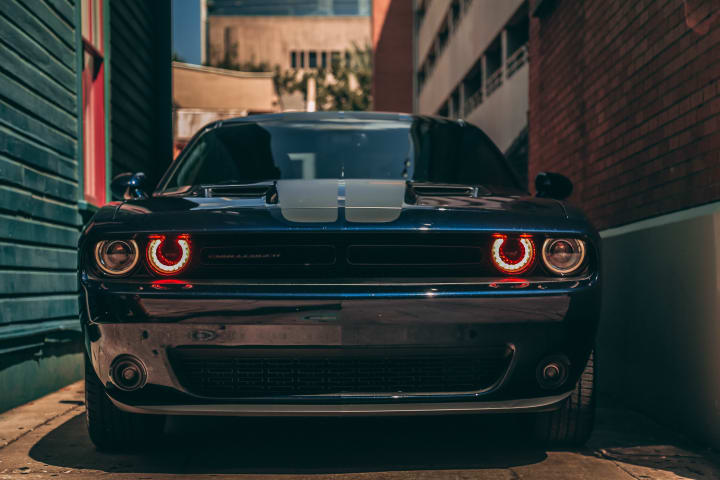How Car Maintenance Costs Increase With Mileage
Wear and tear is a real thing. Here's how car maintenance costs increase with mileage.

I have an hour-long commute, and lately, I've been noticing some issues with my car. I've been noticing the need to replace air filters more frequently, the need for higher oil changes, and much, much more. Wear and tear, as it's commonly called, does pack a powerful punch, when it comes to maintenance costs.
As my car miles climbed, so did my maintenance costs. Ever wonder how car maintenance costs increase with mileage? I did too, so, I decided to take a look into it, to see why maintenance tends to increase as mileage increases.
The first thing you need to know is that the model of car you drive will change how car maintenance costs increase with mileage for you.

Not all cars age well, and there are many cars out there that simply don't fare well with a lot of mileage. BMW's, for example, are notoriously high-maintenance. They also are known for being very pricey to repair, and for having high-price parts, too.
Meanwhile, Hyundais regularly get ranked as some of the cheapest cars to maintain. This isn't surprising, considering that they are entry-level cars that are designed for commuting.
So, keep in mind that when you're learning how car maintenance costs increase with mileage, you need to take into account the kind of car you're driving. Sports cars and luxury brands will naturally cost more to maintain than a standard car.
At arount 25,000 miles, almost all cars have minimal maintenance costs.
Mile for mile, having a nearly-new or brand-new car is the best deal in terms of maintenance costs. The average car will only require about $1,400 for its first 25,000 miles.
After that, maintenance costs will begin to rise dramatically and greatly differ from car to car. Here's why...
Regardless of how much mileage you have, there will be some maintenance costs that will remain the same.
This is the most obvious aspect of how car maintenance costs increase with mileage. You'll need oil changes every 3,000 to 5,000 miles—even if you have a car that's clocked in less than 25,000 miles. The cost of an oil change remains relatively the same.
You also will need to top off your windshield wiper fluid when it runs low. Plus, there will be a need to replace your brake pads and air filters periodically. These are just natural costs that come with every car, and they tend to be fairly steady.
The maintenance you have to do early on is mandatory and steady. You can't really drive a car without lubrication, nor can you wipe away bird poop without wiper fluid.
By 75,000 miles, most cars will start experiencing wear and tear—and much of it will be due to terrain and driving style.
The way tires may have screeched on the ground when you did donuts. The grinding of your brakes after some deer decided to take a walk down the highway. That one jerk's bottle that you ended up running over. Potholes...
All these little things will affect your car's materials in small (and sometimes big) ways. In many cases, driving in rough terrain will speed up the effects of the mileage on your car maintenance costs.
It's not surprising that rough terrain, or rough driving, can alter your car's maintenance needs.After all, car tires may need to be replaced if your idea of a fun Sunday night is doing donuts in the parking lot.
However, many car parts have a limited lifespan—and as bigger parts fail, they need to be replaced.

This is the biggest aspect that influences how car maintenance costs increase with mileage. Simply put, things will begin to break down naturally, due to the stress being on the road will put on a car.
Around the 100K mark, a large portion of cars will need spark plugs to be replaced. This is also the time when other issues, including batteries, car light bulbs, and even tires, tend to require replacement.
Unsurprisingly, around 50 percent of all cars will need to replace parts before the 100K mark.
But it gets worse...
You know how car maintenance costs increase with mileage, due to the repairs they require? The longer you drive, the larger the damage tends to be in bigger parts.
Many of the "less replaceable" car parts, particularly parts of the alternator or engine, will start to show signs of wear by 125,000 to 150,000 miles. A busted cylinder, broken timer belt, or blown-out alternator, can quickly add thousands to your regular maintenance cost.
Past the 125,000 mile mark, you'll also notice that the kinds of problems you have aren't easy fixes anymore. More often than not, this is when the "check engine" light turns on —and when you will have a car that stalls.
Repairs that are harder to diagnose are more expensive. This means maintenance costs go up again.
It's worth pointing out that the parts you have to replace can become far pricier than average, depending on your car make and model.
We made a brief mention of how your car's model and brand can make a difference. Usually, most drivers will begin to see how much that can affect their wallets by the 125,000 mark, too.
Years, too, can affect repair costs. Vintage cars are great, but they will be incredibly hard to find replacement parts for. The same can be said for luxury car brand parts, or car parts from lines that aren't particularly common. If you have a very unusual vintage car, you better expect to pay an arm and a leg for a new motor.
Meanwhile, having a common car that's still relatively new may mean you'll save money on repairs. After all, it's a lot easier to find larger replacement parts if everyone in town drove the same car as you do at one point, right?
By the 200,000 mile line, the majority of cars will have had at least one moment where they didn't start up.

So, you're already reading about how car maintenance costs increase with mileage—and then it hits you. Repairs are maintenance, and there will be a point where a need to repair the car you're driving will become a "when" rather than an "if."
In fact, there will be a point where you will be paying more for repairs that you would be for a new car. For example, if you have a BMW, and you have to replace the engine, you may end up finding it cheaper to just chip in for a new car, simply due to the fact that it may be an equally priced alternator that goes next.
Here's how this affects the price of maintenance: most people, at one point or another, will throw in the towel. It makes sense, since there's a point where maintaining and repairing your car will cost more than a new one.
Now that you know how car maintenance costs increase with mileage, here's what you should learn.
Not all car models are good for large amounts of mileage. If you can't afford the high price tag of a BMW's maintenance, you shouldn't buy it. There's a reason why people drive budget-friendly but reliable cars for long miles, and why luxury cars are traditionally made for shorter trips.
Do your research before you figure out which car you should buy. Planning ahead for the jump in maintenance fees will help you choose the right car for you—no matter what your budget may be.
About the Creator
Skunk Uzeki
Skunk Uzeki is an androgynous pothead and a hard partier. When they aren't drinking and causing trouble, they're writing articles about the fun times they have.






Comments
There are no comments for this story
Be the first to respond and start the conversation.